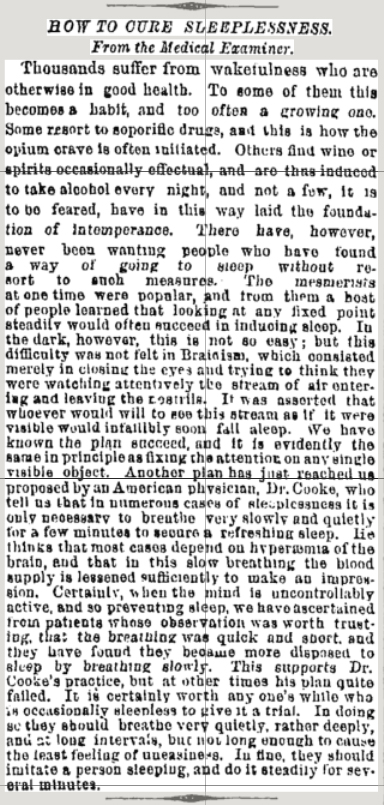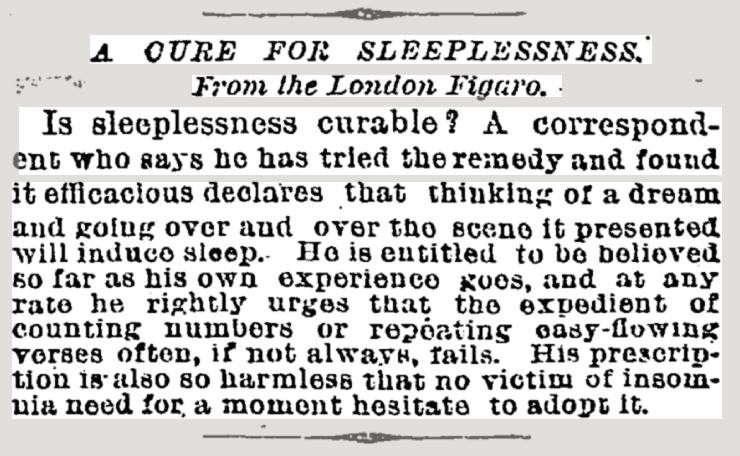How does the method of getting to sleep presented in In Pursuit of Sleep differ from Cognitive Behavior Therapy (CBT)? In Pursuit of Sleep‘s emphasis is the Transition Trek, an imaginary path we travel down after we close our eyes to reach Slumberland. CBT for insomnia (CBT-I), http://www.cbtforinsomnia.com, focuses on reducing daytime stress, providing a favorable bedroom environment, and having a good attitude toward sleep. They accomplish this with 5 sessions of instruction over 5 weeks. The CBT-I method also does not think much of sleep medication. I believe the CBT-I method is excellent, and this article by Austin Frakt in the New York Times would seem to prove that point. It is proven to be more effective than medication and the results of the sessions generally stay with you and improve you life. This research study published in the Journal of the American Medical Association also demonstrated considerable benefit to CBT-I. However, 9 of the 63 subjects simply walked away from the study before completion of the treatment phase because of lack of interest, which demonstrates that it isn’t for everyone. In addition, the Transition Trek method should start working the very first night.
So what does the Transition Trek method have that CBT-I doesn’t? CBT-I has nothing that actually directs the mind toward sleep. It offers nothing in the way of a psychic action to pursue sleep. Even though it provides both an external and internal environment conducive to sleep, it still expects you to “fall” asleep. The same mental processes that have prevented you from going to sleep in the past are still active although the negative influence will definitely be diminished. It does not address all the distracting elements of hypnagogia (sleep onset).
The Transition Trek method provides activities that occupy your mind and direct it toward sleep. It provides both imaginative images and a narrative to occupy your psychic voice that will lead you into Slumberland. But In Pursuit of Sleep offers much more than that. It provides a detailed description of sleep onset and the psychic environment that leads the mind astray in the first place. It is not just a corrosive external environment and internal stress that has lead you astray. These in all probability are not even the most important impediments to sleep. If you don’t understand all the elements of hypnagogia, you cannot possibly understand how to control the mental processes encountered on your way to sleep.
Perhaps the most beneficial aspect of the Transition Trek is the focus on images and the other psychic senses that position you in the psychic world where sleep occurs. In Pursuit of Sleep also makes you aware of the effects of “deafferentation” that diminish the physical irritants (like itches, cold feet, restlessness, etc) that can keep you from believing you are going to sleep. In doing so, In Pursuit of Sleep focuses on the way the mind functions while transitioning from being awake to being asleep.
The other beneficial concept presented in In Pursuit of Sleep is the “sleep propensity curve.” The identification of this curve helps you understand what has gone wrong with it and how to repair it over time, so that you have a high probability of getting to sleep and staying asleep every night.
The bottom line is that CBT is extraordinarily helpful and has been proven so, but it still has some deficiencies because it is not focused on the mental elements of actually getting to sleep. In Pursuit of Sleep fills in that deficiency.



